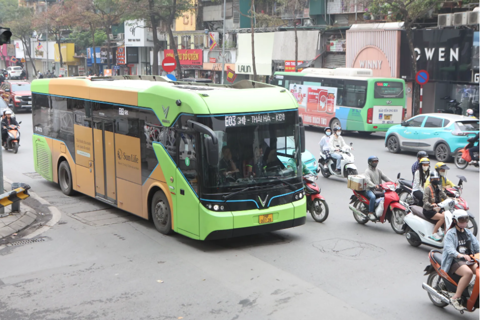Hanoi
Hanoi starts turning railway viaduct into new cultural space
Apr 24, 2019 / 05:21 PM
Locals are now using the space in front of the vaults as a parking lot or to sell stuffs.
Hanoi's Old Quarter Management Board has announced that it has reopened a vault of Phung Hung railway viaduct, a part of the historic Long Bien Bridge in Hoan Kiem district, part of a project to expand the city’s cultural space.
The vault was the first of 127 ones that connect Phung Hung to Long Bien Train Station to be constructed, aiming to realize a municipal scheme on developing public spaces for art and cultural activities along Phung Hung street, Hanoimoi newspaper reported.
The viaduct, which starts from Phung Hung-Tran Phu crossroads to the Long Bien train station and runs through Phung Hung and Gam Cau streets, is 1.2km long with a total of 131vaults, of which 127 are now sealed with cement.
The vaults, built in 1900 and finished in 1902, are 3.5m to 4.5m high and cover about 16sq.m area each. The vaults under the viaduct were sealed with cement in the 70s and 80s of the 20th century to strengthen the viaduct for trains with heavier loads, and keep beggars and drug addicts away from the neighborhood.
Locals are now using the space in front of the vaults as a parking lot or to sell stuffs.
After the vaults are re-opened, Phung Hung will be turned into a culinary street that introduces the best authentic dishes of Hanoi’s Old Quarter to the city’s dwellers and visitors.
In 2017, Hanoi authorities planned to open and transform 127 sealed vaults into coffee shops, art spaces, bookshops and host art and cultural activities.
Earlier in 2018, Vietnamese and Korean artists worked together to turn a part of Phung Hung viaduct into a mural street that featured paintings depicting the old times of Hanoi.
The vault was the first of 127 ones that connect Phung Hung to Long Bien Train Station to be constructed, aiming to realize a municipal scheme on developing public spaces for art and cultural activities along Phung Hung street, Hanoimoi newspaper reported.

The first vault was reopened for cultural space. Photo: Hanoi's Old Quarter Management Board.
|
The vaults, built in 1900 and finished in 1902, are 3.5m to 4.5m high and cover about 16sq.m area each. The vaults under the viaduct were sealed with cement in the 70s and 80s of the 20th century to strengthen the viaduct for trains with heavier loads, and keep beggars and drug addicts away from the neighborhood.
Locals are now using the space in front of the vaults as a parking lot or to sell stuffs.

Motorbikes are parked in front of the vaults. Photo: VNA
|
In 2017, Hanoi authorities planned to open and transform 127 sealed vaults into coffee shops, art spaces, bookshops and host art and cultural activities.
Earlier in 2018, Vietnamese and Korean artists worked together to turn a part of Phung Hung viaduct into a mural street that featured paintings depicting the old times of Hanoi.

Phung Hung has been turned into a mural street.
|








